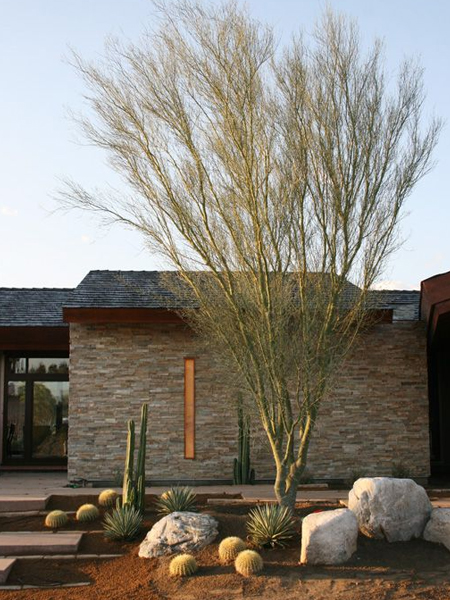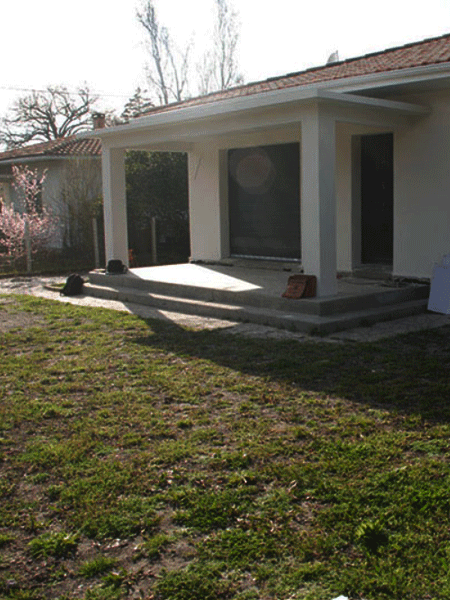Landscaping Ideas for your Pavement
Landscaping the pavement outside a home not only adds to the look of a home but also the value.
29/04/2022
When landscaping a back garden or the garden area where you and your family spend the most amount of time, a lot of effort goes into turning it into a relaxing and comfortable space where everyone can play, chat, or just sit back and enjoy. You spend money on keeping the lawn neat and lush, freshen up the garden with spring and summer annuals, and have probably already spent a fortune on plants, shrubs, and trees to turn the garden into a peace of tranquillity. But what about the pavement or curb outside your home? Have you done anything with that other than lay down grass and perhaps planted a few plants leftover or as a second thought? Perhaps give some consideration to transforming the pavement or curb of your home into a stunning visual that complements the exterior and interior of a home and ups the value of the home. Perhaps even hiring landscape services.
The grassed-over area outside a property generally gets overlooked when planning a garden and yet a properly landscaped pavement or curb garden is the first impression visitors have when visiting your home. Clever landscaping will not only be pleasing to you and your family but will grace visitors with a stylish welcome.
Drawing up a basic plan
Like any good project, a basic plan is essential to doing it right. Take a look at the area you have to work with and note down how much sunlight it receives in the morning or afternoon, or if the area receives full sun all day. This is important as it will determine the best plants for the location. You will also want to consider whether you want the area grassed or if you want to incorporate hard landscaping materials for the sake of low maintenance.
Deciding how to layout the area
Use your basic plan to decide how you want to fill the area. If you have decided on partially grassed and landscaped, make plans to have instant lawn delivered and laid, or arrange with your local Builders for the hardscaping materials to be delivered. Hardscaping includes any non-organic materials such as concrete paving slabs, statuary, gravel, stones and so on.
One thing to keep in mind when planning the layout for a pavement garden is access to water for the plants and being able to mow the grassed area regularly if you are planting lawn. If you're not really into garden maintenance on your free weekends, then it would be better to look at a low maintenance option like some of the ideas shown below. If you prefer a landscape design that does not feature water-wise or drought-resistant planting, consider the installation of an irrigation system.
Using Plants and Accessories
• Grass, Brick and Concrete
The garden in front of the house or on the pavement should be a prelude to what lies behind. You want to make an eye-catching display that is low maintenance and welcomes visitors. That is easily achieved with a combination of bricks or concrete, indigenous plants, and colourful grasses.
Plants such as grasses are extremely low maintenance, and you can buy varieties that are drought-hardy and require no watering other than what nature provides. Other hardy plants such as agapanthus and species of lavender also bring a splash of colour to the layout. Additionally, grasses have a wonderful way of softening hard edges to create an almost dreamy visual.
Your local garden centre will be able to offer advice on hardy grass varieties and plants that will grow well in your location. Finish off the landscaping with permeable solutions such as gravel beds as opposed to a concrete slab or asphalt and use concrete slabs or bricks for walkways.
Creating a desert-like landscape gives any front garden or pavement area a contemporary feel and not only is it drought-tolerant, but it is also extremely low maintenance. Select smaller tree varieties that are indigenous to the region and complement the landscaping theme.
When selecting the right tree for a front garden or pavement area, you will want one that doesn't have an invasive root system. Municipal and telecommunication lines are commonly laid on the outside of a property and, unless you know, it is better to allow for this. You also do not want a tree that goes too tall and blocks off light to the property.
• Make a Statement
While you can make a statement with the right plantings and a tree or shrub, you may also want to add a few accessories that make a bold statement at the entrance to your home.
If you are going to the effort of designing a pavement, curbside or sidewalk garden outside your property, make the effort to make it an eye-catching design simply by adding a few elements. Rocks and boulders, cement or brick cobbles and gravel beds can be used to make a stunning arrangement.
An easier solution to landscaping an entire pavement area is to use large pots in an arrangement and fill these with low-maintenance plants. Do check with your garden centre that the plants you select do not require manual watering if you don't want to spend your time walking around with a hose pipe.
Landscaping a pavement or small front garden doesn't always offer instant results but evolves. Start with the concept and slowly add the elements until the final look is achieved, then you can sit back and take in your hard work as the garden takes shape.
• Garden Layout
While we have touched on this at the beginning of this article, designing the garden layout should reflect the style of the home. Even if you are going for a desert-like theme or full-on English garden, work with a design that complements your home. The options for designing a pavement garden are limitless, as are the variety of elements you can use to create the garden. Permeable materials such as gravel and rocks will allow water to flow away and will work if your favour if you don't want to mow or spend time fussing around. Better to design a pavement garden to require minimal fuss that to let it go to ruin outside your property.
Symmetrical or asymmetric garden designs work well with a modern or contemporary home while curved designs are perfect for a traditional or other styles of home. You can also use a curved design if you want to soften the hard edges of a contemporary home, and this can also be combined with soft plants like grasses.
• LED or Solar Lighting
Another element that will add value and create an instant feature is LED or solar lighting. These days, you can purchase LED outdoor lights that use very little energy and, if you don't want to install wiring to your property, there is always the solar option solution.
There are all types of LED and solar lighting solutions to be found at Builders or your local lighting store and you don't need a lot of lights to light up the night, just one or two lights will make a big difference. If you have a sculptural tree or palms, or even cactus plants, these make excellent subjects for accent lighting.
A pavement or curbside garden should fit in perfectly with its surroundings and reflect the style of the property. Designing a garden that looks great all year round simply involves clever planting and using both indigenous plants and evergreen or deciduous shrubs or trees. Landscaping with gravel, rocks or concrete creates a drought-friendly low maintenance garden that looks after itself and finishes off the outside of a property.














